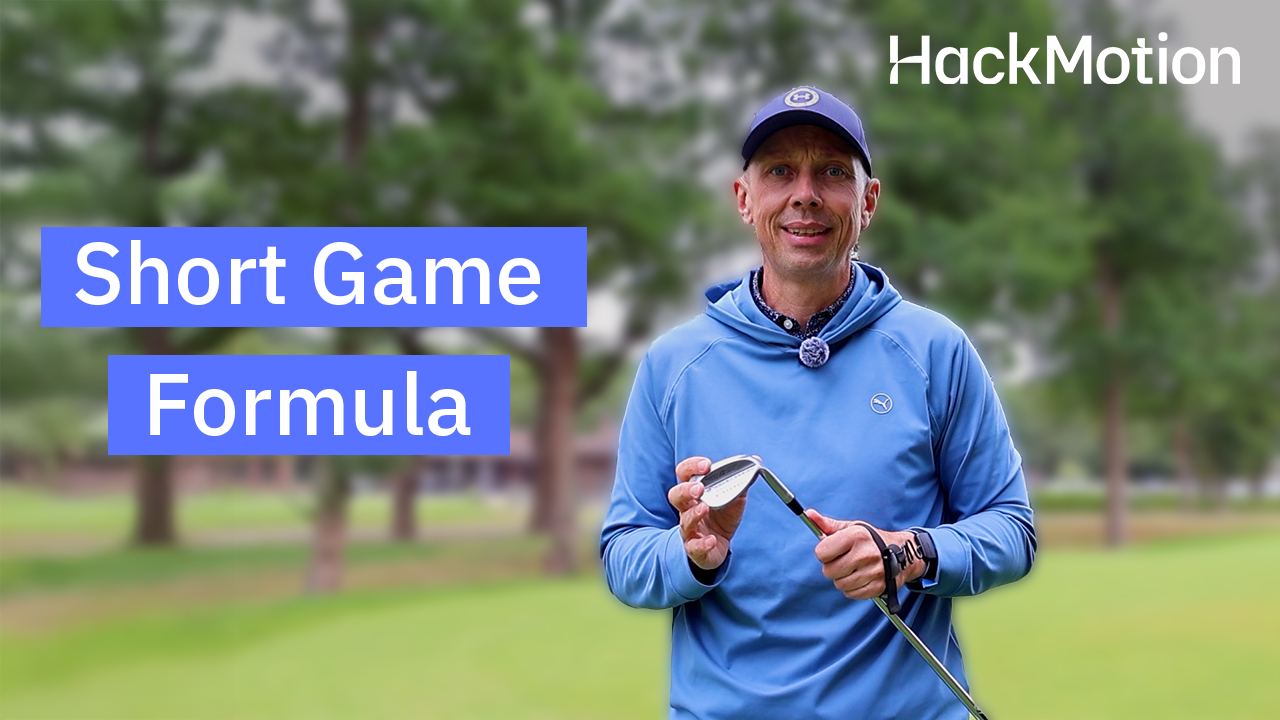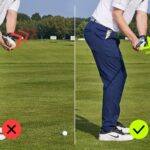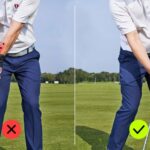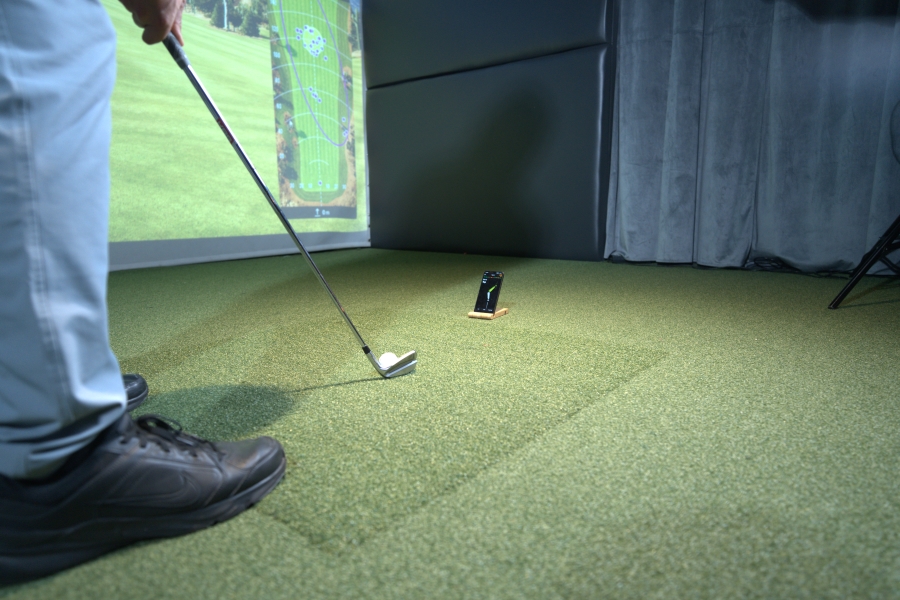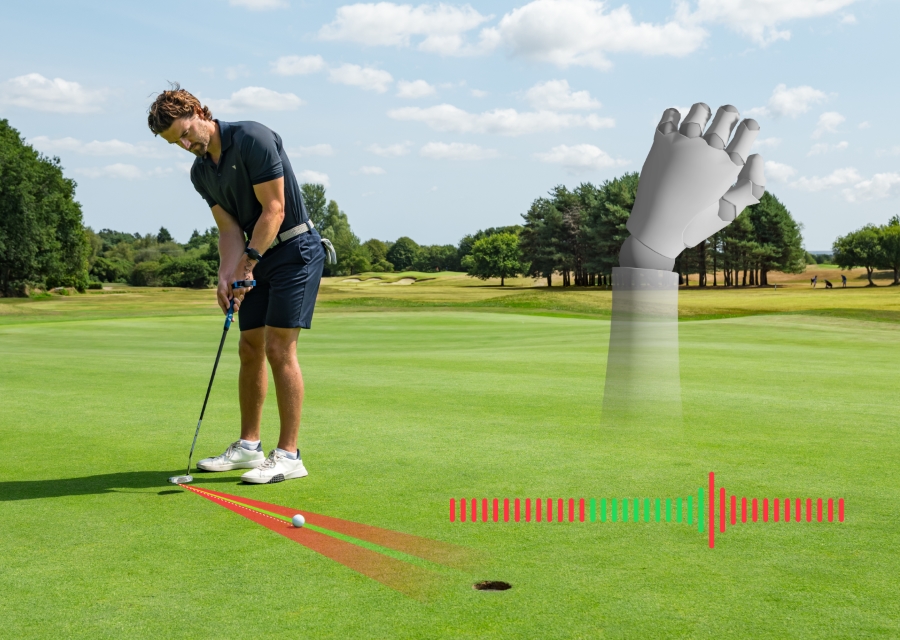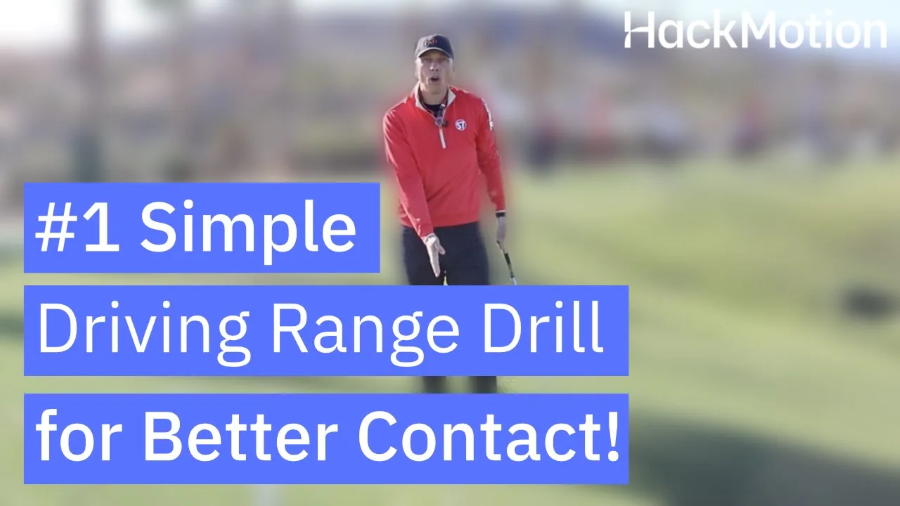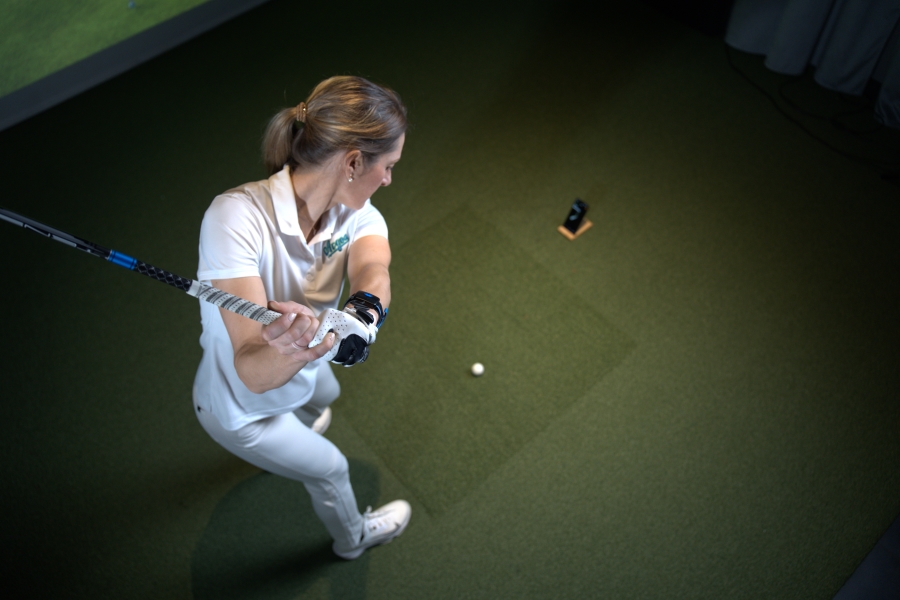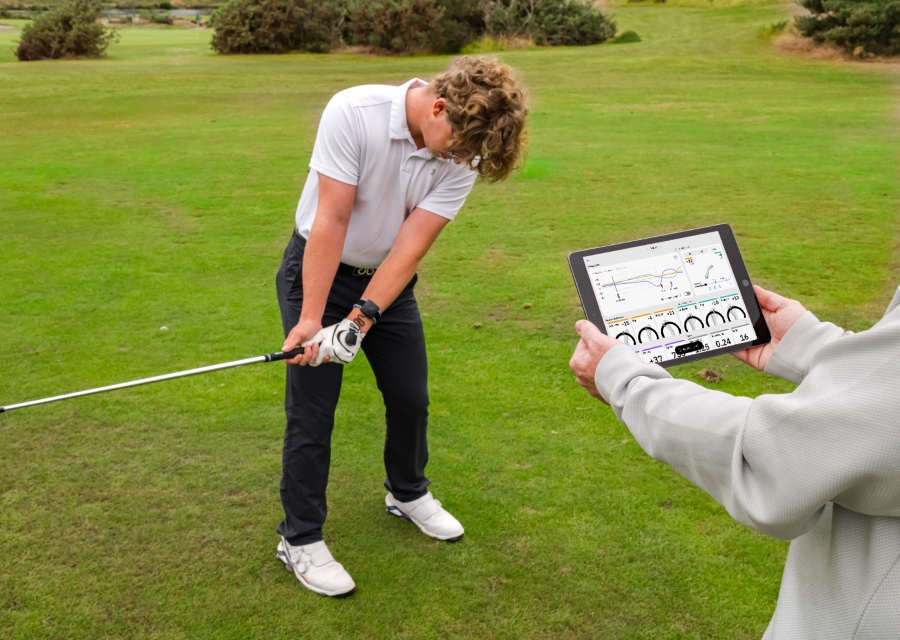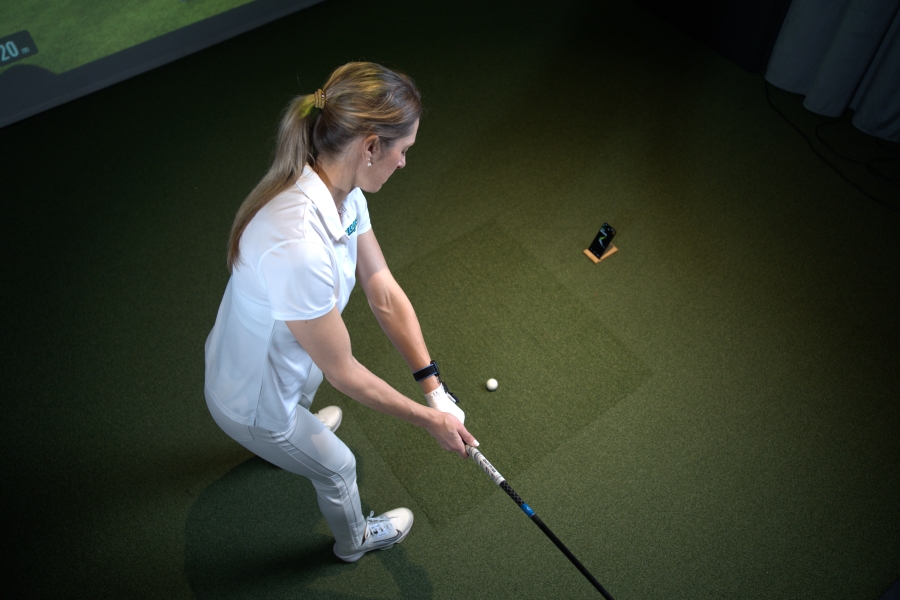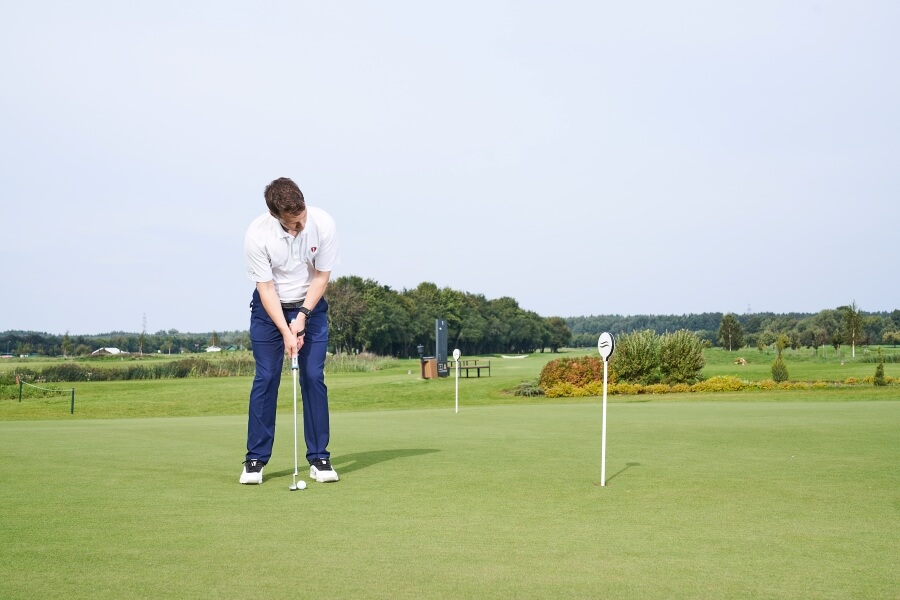6 Chipping Distance Control Drills to Dial in Your Short Game
At some point in your golf career, you will learn how to chip. You’ll know the technique required and the motions you should take to hit that lower running shot that is very reliable around the greens.
However, if you can’t control the distances of these chips, you may as well give up on scoring.
Chipping distance control allows you to aim precisely at the pin and hit it close.
If you’re unsure about how to practice your chipping distance control or the best drills to make a real difference, start with these six.
Key Takeaways
If you don’t have time to read our entire guide on the best chipping distance control drills, here are a few of the things you can take away and work with right now.
- The key to getting good at chipping is to practice with more than one club; use your wedge and your short irons so you have plenty of options on the course.
- Be a little more calculated in your practice, and pace out yardages so you know if you are hitting your goals.
- Keep in mind that alignment and technique are just as important as club selection when it comes to distance control.
- Control the distance of your chips with the length of your backswing and also the speed of the swing. Knowing how to do both will enable you to better control distance.
- Keep your lead wrist in a more flexed position at impact on your chip shots; continuing to do this will make your shots more consistent. Wear your HackMotion to confirm wrist position when practicing chipping.
The Secret to a Better Golf Swing Starts with Your Wrists!
Your clubface angle at impact controls over 80% of your shot’s direction—and it all comes down to your wrists. Click here for the best drills to master your wrist mechanics and take control of your swing.
6 Chipping Drills for Distance Control That Actually Work
Thumbs Down Shot
There is minimal wrist action in the chip shot. If you want to create a consistent low-flying short chip shot, it’s essential to maintain a constant radius in your swing.
This thumbs-down golf chip shot drill is perfect for dialing in your shortest wedge distance and improving solid contact.
Thumbs Down Shot – Step by Step
- Stand closer to the ball, only 2–3 clubhead widths away.
- Keep the ball centered in your stance with a slight shaft lean.
- Focus on torso-driven movement and feel like your thumbs point downward throughout the backswing and follow-through.
- Maintain the “Y” shape formed between your arms and the club.
- Make small, pivot-driven swings with minimal wrist hinge to improve consistency at the low point.
Towel Under Arms Drill (Shot 2 Mid Distance Control Drill)
For a slightly longer chip shot where you need to control distance a little further from the hole you can use a towel to train the arm and body connection.
This shot is where you may start to see a little more wrist hinge, which will help with adding height and speed. You’ll stay a little more connected and hit more predictable shots.
- Video Timestamp: 3:24
Towel Under Arms Drill – Step by Step
- Place a towel under both arms to keep them in place and connected to your torso.
- Stand slightly farther from the ball than in Drill 1 and widen your stance.
- Let your thumbs point upward to form an “L” shape in the backswing and follow-through.
- Use a smooth, torso-driven motion—arms stay connected throughout.
- Swing from L-to-L, controlling wrist hinge for added carry and height.
Slower Full Swing Drill
This drill is when you have progressed through your two shorter chip shots and you are truly ready for the longer pitch shots into the green.
By combining this drill with your practice in Drills One and Two, you should have the shots you need for any approach into these greens.
This drill helps you hit shots with better feel and rhythm.
- Video Timestamp: 7:36
Slower Full Swing Drill – Step by Step
- Use your normal full swing setup with a slightly wider stance.
- Make a full-length swing at 70–80% speed, maintaining a slower, smoother tempo.
- Focus on rhythm over effort, keep it relaxed and fluid from start to finish.
- This slower motion reduces total carry while preserving technique and balance.
- Practice regulating speed to match different wedge distances on the course.
Reverse Leapfrog Drill (Chipping Distance Control Game)
This fun, skill-building drill trains your touch and distance control with chip shots by challenging you to land each ball progressively closer to your feet without passing the previous one.
If you’re looking for a way to practice your chipping distance control, there’s no reason not to try this one. It’s fun, consistent, and gives you some direction on the course.
Reverse Leapfrog Drill – Step by Step
- Start with 5–7 golf balls and select a wedge (like a 54°); any club will work based on your shot preference.
- Hit your first chip so that it lands near the far edge of the green or close to the fringe.
- For your next shot, try to land it 2–4 feet short of the previous ball, but don’t go past it.
- Continue working backward, chipping each ball closer to yourself without overlapping or overshooting.
- Restart the drill if a shot goes too far or is too close to the previous ball.
- Track how many successful balls you get before failing—this becomes your personal best to beat.
Chipping Speed Drill (Same Swing, Varying Speed)
This drill teaches you how to control chip shot distance using swing speed instead of changing your club or backswing length. It’s one of the best ways to build feel and trust in your short game, especially from 5 to 25 yards.
By keeping your swing size constant and only adjusting the speed, this drill trains your brain to understand how much acceleration is needed to hit specific yardages. It removes mechanical complexity and builds natural tempo control.
Chipping Speed Drill – Step by Step
- Use one club (like a 52° or 54° wedge) and place five balls at a time on consistent turf.
- Start about 25 yards from your target (or the edge of the green).
- For the first five shots, aim to land each one at 5 yards using a smooth, short swing.
- Without changing the length of your backswing, increase swing speed slightly for each new distance target: Next five shots to 10 yards. Then five to 15 yards. Then 20 yards. Then 25 yards.
- After reaching 25 yards, work your way back down to 5 yards, maintaining the same swing shape but adjusting tempo.
- Focus on tempo, balance, and feel, you’re learning how small speed changes affect total distance.
Bicep Chipping Drill (Eliminate Wristy Chips)
This drill trains you to chip using your torso and pivot, rather than relying on your hands and wrists.
Wearing your HackMotion during this drill can help you determine if your wrists are performing as they should.
Restricting excess arm and wrist movement helps you develop a repeatable chipping motion with better feel, contact, and distance control.
Bicep Chipping Drill – Step by Step
- Hold the club with your trail hand only, gripping it low on the handle.
- With your lead hand, gently hold your trail arm’s bicep to stabilize your arm.
- Make small chip swings using your torso and pivot, your arms and hands should stay quiet.
- Focus on brushing the grass with a shallow, smooth motion.
- After a few reps, return to your normal grip and replicate the same body-driven motion.
Final Thoughts
If you feel confident about your chipping stroke, start practicing distance control more than the technique.
To improve your strokes gained percentages around the green, you need to chip it closer to the hole. You’ll end up with fewer putts and feel more confident about your approach shots to the green.
Incorporate the HackMotion wrist sensor into your distance control drills to help ensure your technique is always spot on. Golfers who want additional guidance with short-game distance control can also work with skilled golf coaches who use HackMotion to fine-tune wrist angles and impact precision.
